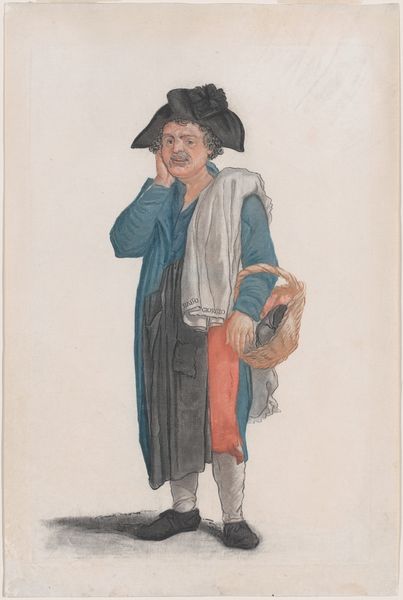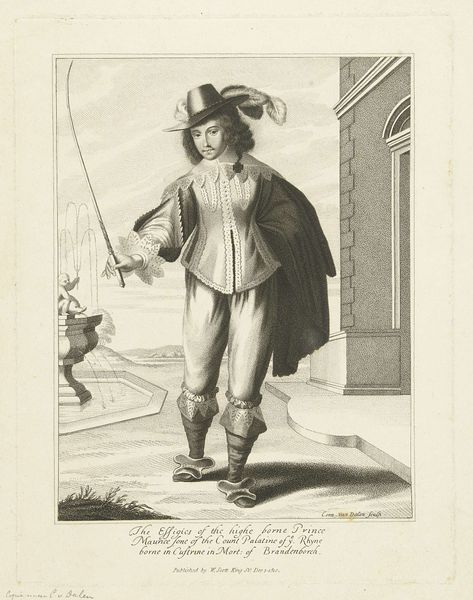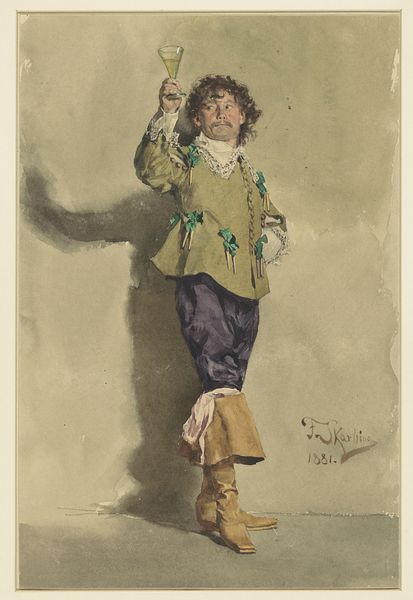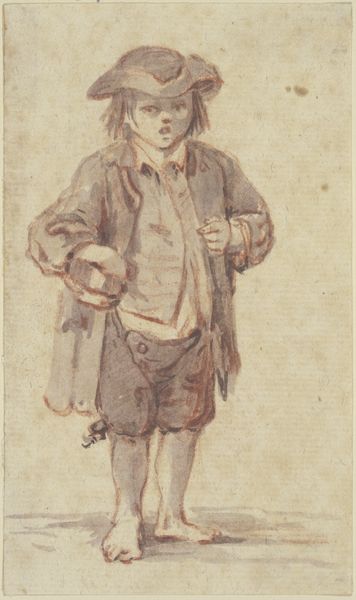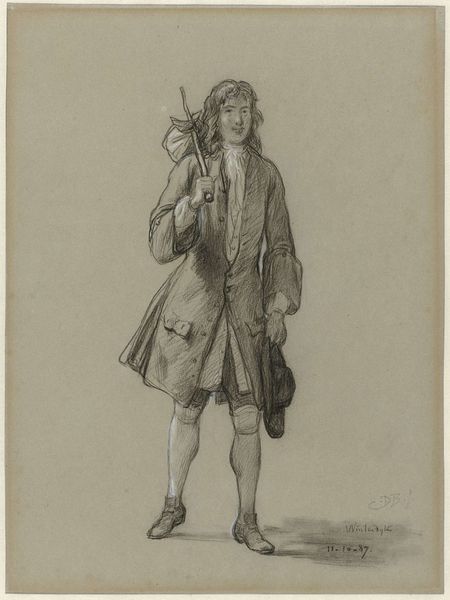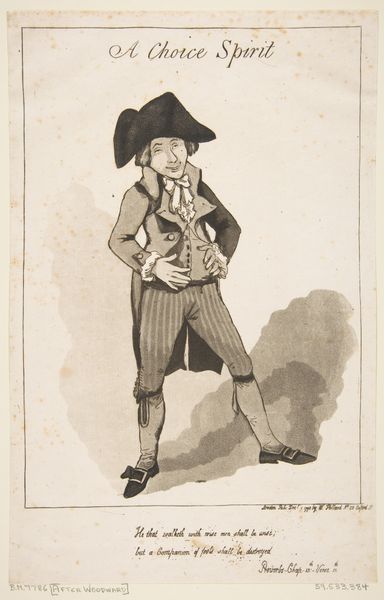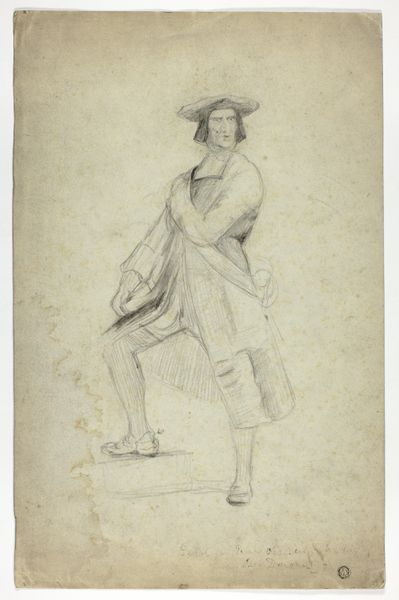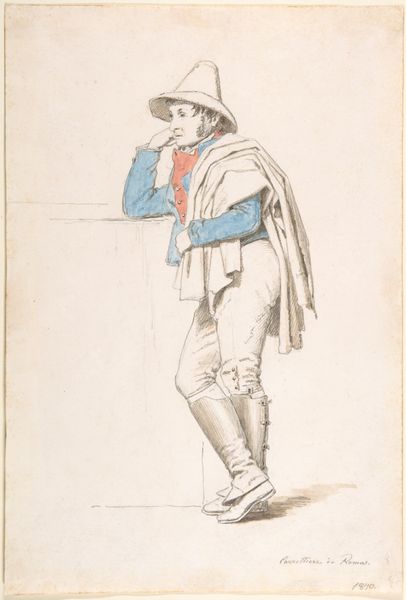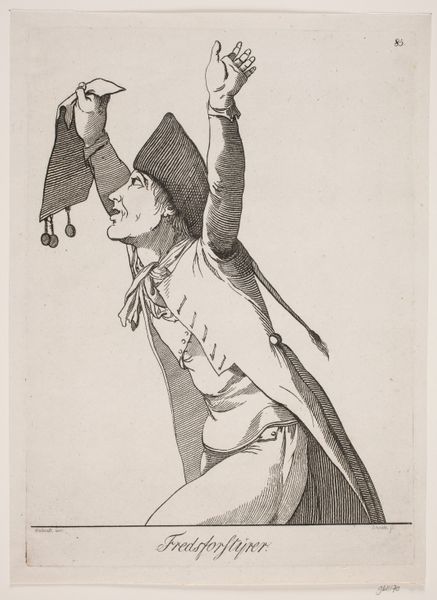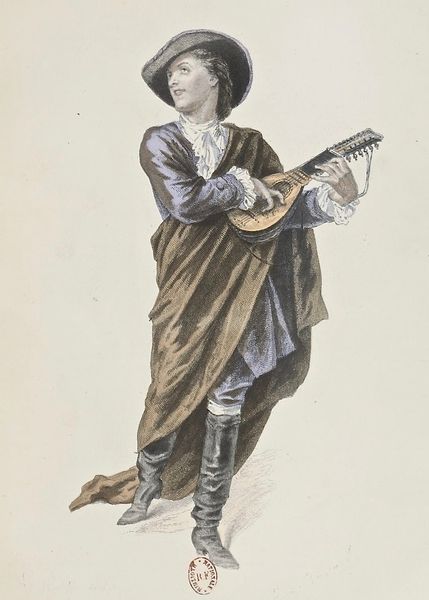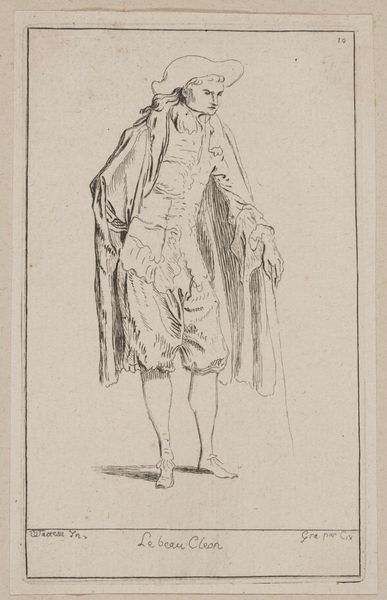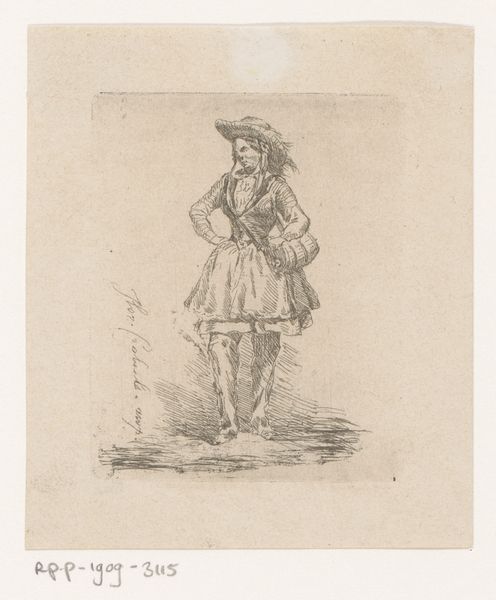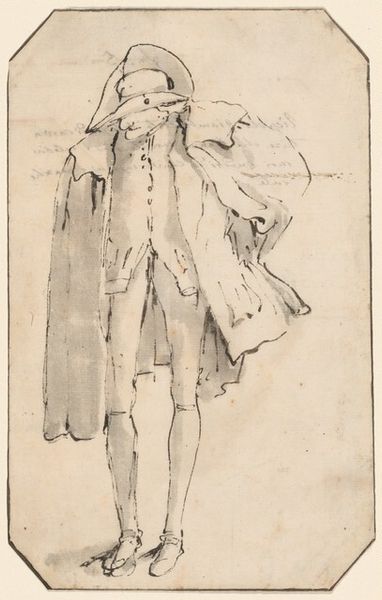
Portrait of the castle actor Baumeister in the role of the Pied Piper of Hamelin 1868
0:00
0:00
Dimensions: 26 x 36 cm
Copyright: Public domain
Editor: Here we have Josef Kriehuber's "Portrait of the castle actor Baumeister in the role of the Pied Piper of Hamelin," a drawing made with watercolor, charcoal, and pencil, in 1868. What immediately strikes me is the theatricality and the... slightly absurd costume. How do you interpret this work, thinking about its historical context? Curator: It's fascinating to consider this drawing through the lens of 19th-century theatrical culture. Notice how Kriehuber captures Baumeister in costume. The role of the Pied Piper would have carried significant social weight, speaking to anxieties about child welfare, community responsibility, and the seductive power of promises, especially in a time of immense social change and industrialization. Editor: So, it’s more than just documenting an actor; it’s tapping into broader anxieties of the period? Curator: Precisely. The theatre served as a crucial public forum. How does Baumeister's costuming impact how the public might perceive him as the Pied Piper? Do you notice how it might both align with popular notions of the fairy tale, but also subvert audience expectation, like his elegant curly hair? Editor: I do see that contrast, now. He's ragged, but not *too* ragged. It is still clearly performative poverty. What I thought was absurd now feels quite calculated. Curator: Yes, the layering of the actual social function with the actor and his role helps us to comprehend the function of theatres and actors, in portraying social ideas. This image tells us something about the socio-political atmosphere of that era. Editor: It's amazing how much this artwork reveals when viewed in relation to social dynamics. Thanks, I’m learning to consider the impact that politics and other conditions had on the arts of that time. Curator: The image allows to revisit assumptions of theater’s cultural influence during a period when entertainment often played out social roles in the popular imagination.
Comments
No comments
Be the first to comment and join the conversation on the ultimate creative platform.
